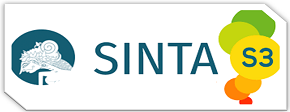Boycott Or Buy? Exploring Consumer to Brand Betrayal and Brand Hate in The F&B Industry
DOI:
https://doi.org/10.30587/jurnalmanajerial.v12i02.9576Keywords:
Brand Betrayal, Brand Hate, Desire for Avoidance, Negative Word of MouthAbstract
Background – Boycotts are a form of rejection that has been going on for a long time and has a significant impact on product sales, production and marketing .
Aim – This study further explores the relationship between negative word of mouth, brand hate, brand betrayal and desire for avoidance in the context of the boycott phenomenon against fast food restaurants, McDonald's.
Design / methodology / approach – This study focuses on consumers in Indonesia who have purchased McDonald's products both before and after the boycott. The method used in this study is quantitative with purposive sampling technique and the analysis tool is Smart-PLS-based Structural Equation Modeling (SEM).
Findings – The results of this study show that there is an influence between the NWOM variable on brand hate and brand betrayal, brand hate influences desire for avoidance. However, NWOM and brand betrayal have no effect on desire for avoidance. Nevertheless, NWOM mediated by hatred of the brand is proven to directly influence the desire for avoidance, while when mediated by hatred of the brand, the effect is insignificant.
Conclusion – This study reveals that a person's decision to continue buying or avoiding a boycotted brand is not solely influenced by negative information, but is also influenced by various factors, such as the need for the product.
Research implications – Based on the results of this study, companies need to pay more attention to managing negative sentiment, especially on social media, to prevent the emergence of hatred towards brands that have the potential to cause long-term loss of consumers.
Limitations – The limitation of this study is the limited number of consumers who boycott. Not all individuals will avoid boycotted brands due to religious beliefs, sympathy, or geographical limitations covering only one country.
References
Andini, N. S. (2024). Compas Market Insight Dashboard: Efek Boikot, Pasar F&B Mengalami Penurunan Penjualan Hingga 53% di E-commerce. https://compas.co.id/article/market-insight-efek-boikot-pasar-fb-alami-penurunan-penjualan/
Antara. (2023). Ramai boikot Israel, begini jalan panjang sejarah gerakan boikot dari Eropa. Tempo.Co. https://www.tempo.co/ekonomi/ramai-boikot-israel-begini-jalan-panjang-sejarah-gerakan-boikot-dari-eropa-115315
Arruda Filho, E. J. M., & Barcelos, A. de A. (2021). Negative Online Word-of-Mouth: Consumers’ Retaliation in the Digital World. Journal of Global Marketing, 34(1), 19–37. https://doi.org/10.1080/08911762.2020.1775919
Baghi, I., & Gabrielli, V. (2021). The role of betrayal in the response to value and performance brand crisis. Marketing Letters, 32(2), 203–217. https://doi.org/10.1007/s11002-021-09559-7
Balaji, M. S., Khong, K. W., & Chong, A. Y. L. (2016). Determinants of negative word-of-mouth communication using social networking sites. Information and Management, 53(4), 528–540. https://doi.org/10.1016/j.im.2015.12.002
Bayarassou, O., Becheur, I., & Valette-Florence, P. (2020). “Fight or flight”: coping responses to brand hate. Journal of Product and Brand Management, 30(3), 492–511. https://doi.org/10.1108/JPBM-08-2019-2519
Bryson, D., Atwal, G., & Hultén, P. (2013). Towards the conceptualisation of the antecedents of extreme negative affect towards luxury brands. Qualitative Market Research, 16(4), 393–405. https://doi.org/10.1108/QMR-06-2013-0043
Cahyadi, N., & Respati, P. P. (2024). Brand Reputation, Brand Awareness Dan Brand Image Terhadap Kepercayaan Dan Loyalitas Donatur. Jurnal Manajerial, 11. http://dx.doi.org/10.30587/jurnalmanajerial.v11i02.7560
Cheah, J. H., Sarstedt, M., Ringle, C. M., Ramayah, T., & Ting, H. (2018). Convergent validity assessment of formatively measured constructs in PLS-SEM: On using single-item versus multi-item measures in redundancy analyses. International Journal of Contemporary Hospitality Management, 30(11), 3192–3210. https://doi.org/10.1108/IJCHM-10-2017-0649
Christophersen, T., & Konradt, U. (2011). Reliability, validity, and sensitivity of a single-item measure of online store usability. International Journal of Human Computer Studies, 69(4), 269–280. https://doi.org/10.1016/j.ijhcs.2010.10.005
Curina, I., Francioni, B., Hegner, S. M., & Cioppi, M. (2020). Brand hate and non-repurchase intention: A service context perspective in a cross-channel setting. Journal of Retailing and Consumer Services, 54(January 2019), 102031.
https://doi.org/10.1016/j.jretconser.2019.102031
Do, H. N., Do, N. B., Nguyen, T. M., & Nguyen, H. M. (2024). Anti-Brand Activism in the Collectivist Orientation: The Case of Online-Consumers-Run Communities. Journal of Promotion Management, 30(5), 811–841.
https://doi.org/10.1080/10496491.2024.2318665
Elkhani, N., & Bakri, aryati bt. (2012). Author(s) Contact Details: 1 University Technology Malaysia, Skudai, Johor Bahru, Malaysia. Journal of Research and Innovation in Information Systems, 2, 1–13.
Finkel, E. J., Rusbult, C. E., Kumashiro, M., & Hannon, P. A. (2002). Dealing with betrayal in close relationships: Does commitment promote forgiveness? Journal of Personality and Social Psychology, 82(6), 956–974. https://doi.org/10.1037/0022-3514.82.6.956
Grégoire, Y., & Fisher, R. J. (2008). Customer betrayal and retaliation: When your best customers become your worst enemies. Journal of the Academy of Marketing Science, 36(2), 247–261. https://doi.org/10.1007/s11747-007-0054-0
Hair. (2023). AN OVERVIEW OF RECENT AND EMERGING DEVELOPMENTS IN PLS-SEM. SAGE Publications, Inc. https://uk.sagepub.com/sites/default/files/upm-assets/129270_book_item_129270.pdf
Hair, J. F., Black, W. C., Babin, B. J., & Andersorn, R. E. (2010). Multivariate Data Analysis. In Polymers. https://doi.org/10.3390/polym12123016
Hair, J. F., Risher, J. J., Sarstedt, M., & Ringle, C. M. (2019). The Results of PLS-SEM Article information. European Business Review, 31(1), 2–24.
Hegner, S. (2017). Determinants and Outcomes of Brand Hate. Journal of Product & Brand Management, 1(1), 13–25.
Ishak, S., Khalid, K., & Sulaiman, N. (2018). Influencing consumer boycott: between sympathy and pragmatic. Journal of Islamic Marketing, 9(1), 19–35. https://doi.org/10.1108/JIMA-05-2016-0042
Jabeen, F., Kaur, P., Talwar, S., Malodia, S., & Dhir, A. (2022). I love you, but you let me down! How hate and retaliation damage customer-brand relationship. Technological Forecasting and Social Change, 174(September 2021), 121183.
https://doi.org/10.1016/j.techfore.2021.121183
Kurtoğlu, R., Özbölük, T., & Hacıhasanoğlu, P. (2022). Revisiting the effects of inward negative emotions on outward negative emotions, brand loyalty, and negative WOM. Journal of Brand Management, 29(1), 72–84. https://doi.org/10.1057/s41262-021-00257-3
Lee, J. S., Pan, S., & Tsai, H. (2013). Examining perceived betrayal, desire for revenge and avoidance, and the moderating effect of relational benefits. International Journal of Hospitality Management, 32(1), 80–90. https://doi.org/10.1016/j.ijhm.2012.04.006
McQuitty, S. (2018). The Purposes of Multivariate Data Analysis Methods: an Applied Commentary. Journal of African Business, 19(1), 124–142.
https://doi.org/10.1080/15228916.2017.1374816
Nariswari, A. V., & Opita, E. (2023). Tak Sampai 121 Brand, Ini Daftar Lengkap Produk Pro Israel yang Harus Diboikot Versi BDS Indonesia. Suara.Com. https://www.suara.com/news/2023/11/14/191613/tak-sampai-121-brand-ini-daftar-lengkap-produk-pro-israel-yang-harus-diboikot-versi-bds-indonesia
Nguyen, H. N., & Nguyen, T. B. (2021). Sense of online betrayal, brand hate, and outrage customers’ anti-brand activism. Innovative Marketing, 17(4), 75–87.
https://doi.org/10.21511/im.17(4).2021.07
Ninh Nguyen, H., & Ninh NGUYEN, H. (2021). Antecedents and Consequences of Brand Hate Among Netizens: Empirical Evidence from Vietnam. Journal of Asian Finance, Economics and Business, 8(7), 579–0589. https://doi.org/10.13106/jafeb.2021.vol8.no7.0579
Nugraha, D. W. (2023). Boikot Produk Israel: Antara Solidaritas Kemanusiaan dan Dampak Ekonomi Lokal. Kompas.Com.
Odoom, R., Kosiba, J. P., Djamgbah, C. T., & Narh, L. (2019). Brand avoidance: underlying protocols and a practical scale. Journal of Product and Brand Management, 28(5), 586–597. https://doi.org/10.1108/JPBM-03-2018-1777
Pinto, O. (2021). Antecedents and consequences of brand hate : empirical evidence from the telecommunication industry Olavo Pinto and Am. https://doi.org/10.1108/EJMBE-04-2020-0084
Rasouli, N., Rasoolimanesh, S. M., Rahmani, A. K., Momayez, A., & Torabi, M. A. (2022). Effects of customer forgiveness on brand betrayal and brand hate in restaurant service failures: does apology letter matter? Journal of Hospitality Marketing and Management, 31(6), 662–687. https://doi.org/10.1080/19368623.2022.2043800
Reinikainen, H., Tan, T. M., Luoma-aho, V., & Salo, J. (2021). Making and breaking relationships on social media: the impacts of brand and influencer betrayals. Technological Forecasting and Social Change, 171(November 2020), 120990.
https://doi.org/10.1016/j.techfore.2021.120990
Romani, S., Grappi, S., Zarantonello, L., & Bagozzi, R. P. (2015). The revenge of the consumer How brand moral violations lead to consumer anti-brand activism. Journal of Brand Management, 22(8), 658–672. https://doi.org/10.1057/bm.2015.38
Rouziès, D., Coughlan, A. T., Anderson, E., & Lacobucci, D. (2009). Determinants of pay levels and structures in sales organizations. Journal of Marketing, 73(6), 92–104.
https://doi.org/10.1509/jmkg.73.6.92
Sami Albayati, M., Kamariah Nik Mat, N., Salem Musaibah, A., Saleh Aldhaafri, H., & Mohammed Almatari, E. (2012). Participate In Boycott Activities Toward Danish Products From The Perspective Of Muslim Consumer. American Journal of Economics, 2(4), 120–124. https://doi.org/10.5923/j.economics.20120001.27
Sarkar, A., Gahlot, J., Sreejesh, S. S., & Bikramjit, M. R. A. (2019). You are so embarrassing , still , I hate you less ! Investigating consumers ’ brand embarrassment and brand hate. Journal of Brand Management. https://doi.org/10.1057/s41262-019-00164-8
Seo, S., & Jang, S. C. (Shawn). (2021). A negative or positive signal? The impact of food recalls on negative word-of-mouth (N-WOM). Journal of Hospitality and Tourism Management, 47(November 2020), 150–158. https://doi.org/10.1016/j.jhtm.2021.03.008
Spangenberg, E. R., Sprott, D. E., Grohmann, B., & Smith, R. J. (2003). Mass-communicated prediction requests: Practical application and a cognitive dissonance explanation for self-prophecy. Journal of Marketing, 67(3), 47–62.
https://doi.org/10.1509/jmkg.67.3.47.18659
Tosun, P., Cagliyor, S. I., & Gürce, M. Y. (2024). Reducing Consumer–Brand Incongruity Through Corporate Social Responsibility and Brand Trust: Exploring Negative Word-of-Mouth (NWOM). International Journal of Consumer Studies, 48(6).
https://doi.org/10.1111/ijcs.13099
Wangenheim, F. V. (2005). Postswitching negative word of mouth. Journal of Service Research, 8(1), 67–78. https://doi.org/10.1177/1094670505276684
Weitzl, W., Hutzinger, C., & Einwiller, S. (2018). An empirical study on how webcare mitigates complainants’ failure attributions and negative word-of-mouth. Computers in Human Behavior, 89(February), 316–327. https://doi.org/10.1016/j.chb.2018.07.012
Yu, H., Legendre, T. S., & Jung, I. H. (2022). Brand betrayal and moral judgment: consumers’ responses to M&A of local foodservice brands. International Journal of Contemporary Hospitality Management, 34(12), 4592–4608. https://doi.org/10.1108/IJCHM-11-2021-1380
Zarantonello, L., Romani, S., Grappi, S., & Bagozzi, R. P. (2016). Brand hate. Journal of Product and Brand Management, 25(1), 11–25. https://doi.org/10.1108/JPBM-01-2015-0799
Zhang, C., & Laroche, M. (2020). Brand hate: a multidimensional construct. Journal of Product and Brand Management, 30(3), 392–414. https://doi.org/10.1108/JPBM-11-2018-2103
Downloads
Published
How to Cite
Issue
Section
License
Copyright (c) 2025 Nabila Nurkhalisa, Muhammad Yasser Iqbal Daulay

This work is licensed under a Creative Commons Attribution 4.0 International License.






























 P-ISSN: 2354-8592 __ E-ISSN: 2621-5055
P-ISSN: 2354-8592 __ E-ISSN: 2621-5055 
